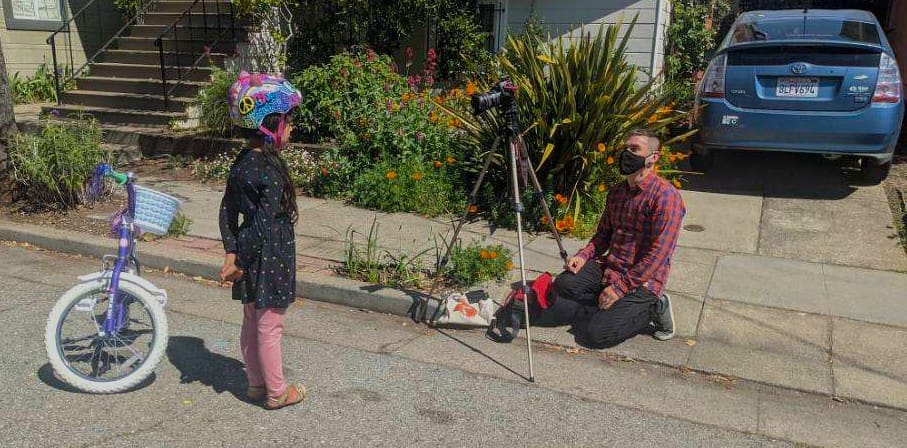
John Kamp (left) John Kamp is an urban and landscape designer, and licensed landscape contractor with Prairieformwho has developed innovative tools for engaging people through their hands and senses in cities, urban design, and the natural world. He is also an experienced facilitator, trainer, and educator who leads hands-on interactive workshops with James Rojas of Place It!. He frequently translates the findings and outcomes of those workshops into designs for inclusive and livable streets and neighborhoods that leave room for all residents to improvise and help create a more welcoming public realm.
James Rojas (right) is an urban planner, community activist, and artist who founded PLACE IT!. He has developed an innovative public-engagement and community-visioning method that uses art-making as its medium. Through this method he has engaged thousands of people by facilitating over four hundred workshops and building over fifty interactive models around the world. Rojas is also one of the few nationally recognized urban planners to examine U.S. Latino cultural influences on urban design and sustainability. He has written and lectured extensively on how culture and immigration are transforming the American front yard and landscape.There is an endless amount of natural know-how and street-smart imagination to glean from children when we look at how we can be developing more and better walkable communities and safe spaces. In the words of James Rojas, “Every child is capable of becoming an urban planner because they use their minds and bodies to understand the places they habituate“.


This is the ethos and purpose behind Place It!, a design- and participation-based urban planning practice that uses model-building workshops and on-site interactive models to help engage the public in the planning and design process. Through the Place It! process participants are able to learn about the role of planning and design in shaping how we live, and to translate their dreams and ideas into physical forms and models.
John Kamp and his partner James Rojas recently expanded Place It! out into doing model-building workshops online, and engaging people through video – including doing virtual walking tours. John produced this brilliant video for the Safe Routes Partnership called Maximum Walk and Roll, which explores how you can engage kids with their hands and senses in designing streets for maximum walking and rolling. Click the image below to watch the video.
They created this video as a companion piece to a Place It! training they did with Safe Routes Partnershipfolks across the country in January and then a PDF guide on how to lead your own Place It! workshopswith youth with a focus on creating walkable and rollable streets. Having a range of media that catered to various individual learning styles was important to them.
“Play is at the core of the work James and I do – really trying to engage people through play in what can sometimes seem like very technical and complicated topics: urban planning, urban design, transportation, landscape. So a playful tone and feel were very much at the core of the starting point for the video; I didn’t want to do anything that came across as wonky or technical. I also wanted to let the kids be the stars of the show as much as possible and show that they can really articulate how they feel about spaces and places (sometimes better than adults can, as kids are oftentimes very unfiltered about what they say), and also be their own designers.”


John says the film The 400 Blows and the scenes in which the kids are scampering around the city and experiencing independence and exploration were very much influences on the video.
When people build their favorite childhood memories in the Place It! workshops, John says a strong recurring theme is independence and exploration in all its forms – oftentimes that first time the participant remembers being able to venture off on their own – even if it was just to the woods behind their house.
The next time you’re out and about, or better yet on a walk audit, tap into your child-like self and come to know your neighborhood in the ways you were always meant to – through the organic curiosity of your own senses, and leaning into what you’re feeling, no filter, as you meander through public space.
For more on John and James’ work and how to implement and embody the principles of Place It! in your work, click the links below:
- Check out A Place It! Guide to Safe Routes to Schools, the companion piece to the video.
- Stay tuned – James Rojas and John Kamp are currently writing a book for Island Press called Dream, Play, Build – on hands-on ways of engaging diverse audiences in urban planning, transportation, and landscape.
- Place It! Website
- Prairieform Website